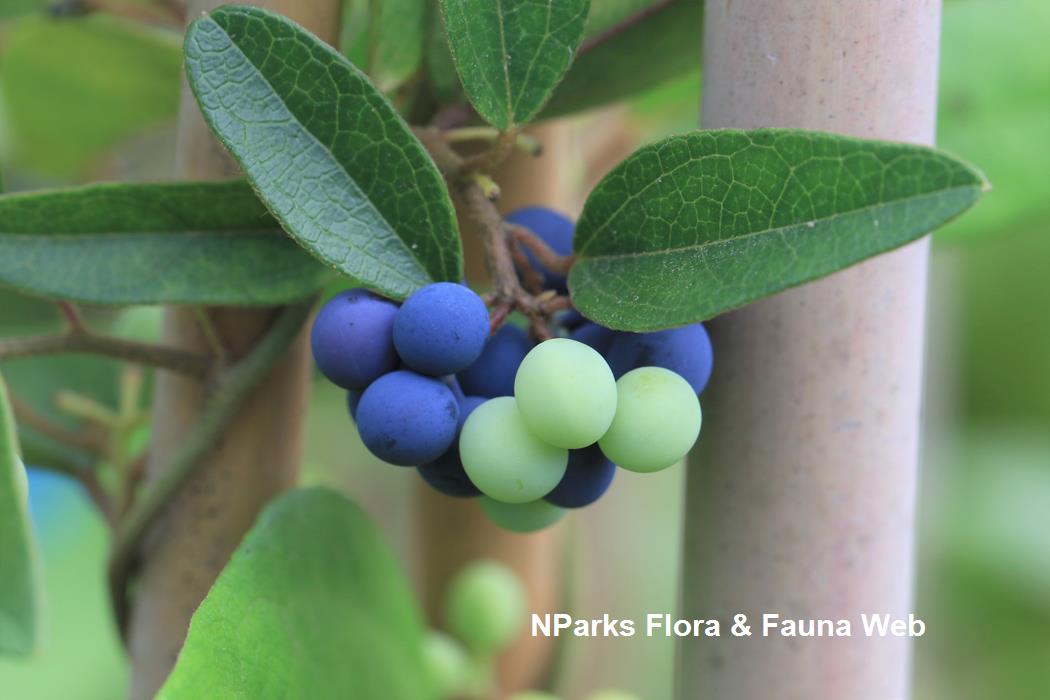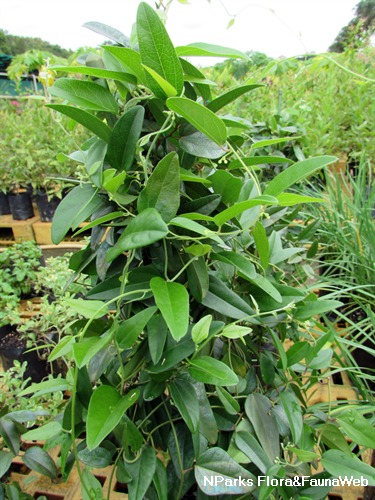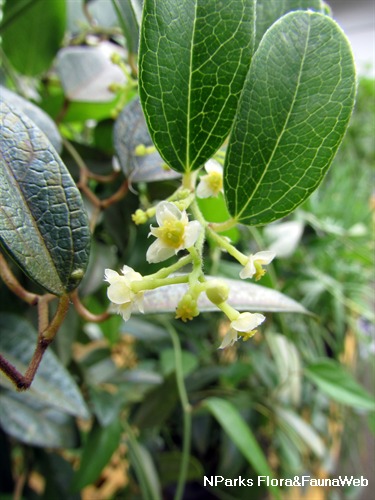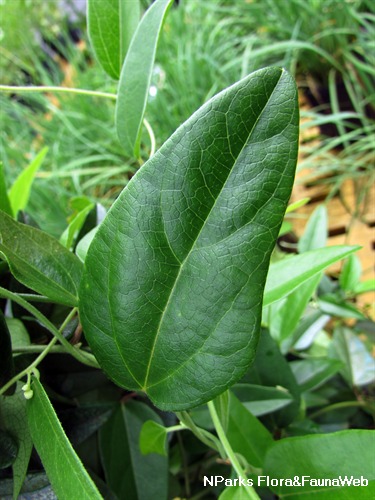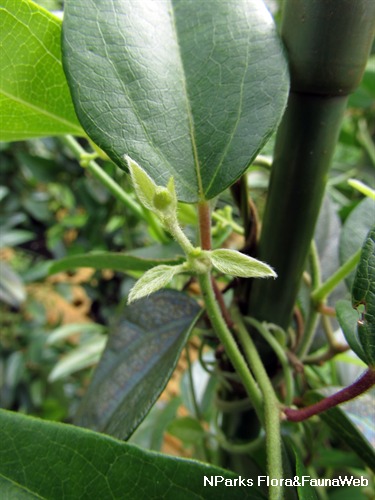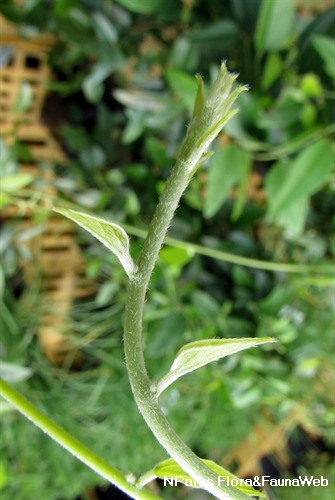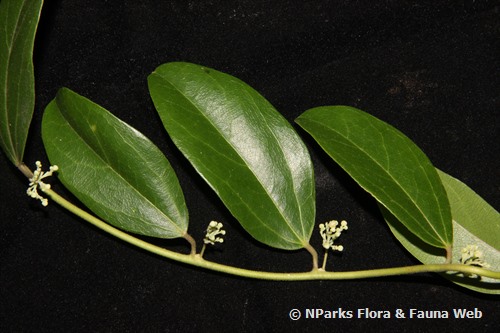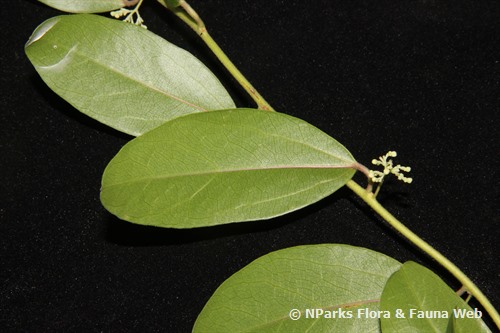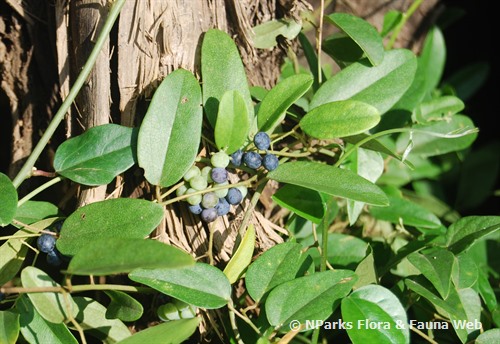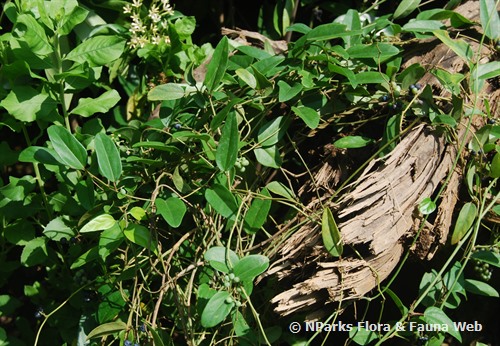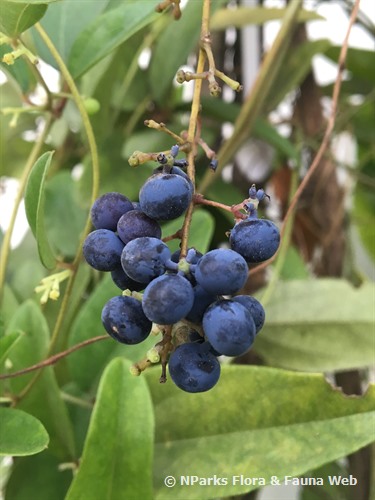
Back
Nephroia orbiculata (L.) L.Lian & Wei Wang
| Family Name: | Menispermaceae |
| Synonyms: | Cocculus orbiculatus (L.) DC. |
| Common Name: | Queen Coralbead |
Name
Classifications and Characteristics
| Plant Division | Angiosperms (Flowering Seed Plants) (Dicotyledon) |
|---|---|
| Plant Growth Form | Climber |
| Lifespan (in Singapore) | Perennial |
| Mode of Nutrition | Autotrophic |
| Plant Shape | Weeping / Pendulous, Irregular |
Biogeography
| Native Distribution | From Himalaya, China, Japan, the Philippines to Hawaii. |
|---|---|
| Native Habitat | Terrestrial (Coastal Forest, Grassland / Savannah/ Scrubland) |
| Preferred Climate Zone | Tropical |
| Local Conservation Status | Native to Singapore (Critically Endangered (CR)) |
Description and Ethnobotany
| Growth Form | It is a sprawling woody vine, that grows up from 2 m up to 3.5 m tall. |
|---|---|
| Foliage | Leaves are 2.5 to 12 cm long, come in variable shapes from lanceolate to broad ovate and sometimes three-lobed with acute (pointed) apex and rounded to cordate base. Leaf blade is light green to bluish green, glaucous (waxy, greyish blue). |
| Flowers | Flowers are tiny and monoecious, creamy yellowish to white, borne in clusters (axillary panicles). |
| Fruit | Fruits are in grape-like clusters, maturing to blue or black, each fruit is no more than 1 cm big. |
| Habitat | It is known to grow in open areas, grasslands, hillsides, streambanks, and in dry forests. |
| Etymology | The specific epithet 'orbiculata' means disc-shaped or circular in outline, in reference to the rounded leaves. |
Landscaping Features
| Landscaping | The bluish-green leaves and dark blue grape-like fruits add an interesting feature to a native landscape. This plant can be used as an accent plant or over open rocky areas in a natural setting. |
|---|---|
| Desirable Plant Features | Ornamental Foliage, Ornamental Fruits |
| Landscape Uses | Trellis / Arbour / Pergola, Groundcover |
Plant Care and Propagation
| Light Preference | Full Sun |
|---|---|
| Water Preference | Little Water |
| Rootzone Tolerance | Drought Tolerant, Well-Drained Soils |
| Potential Problems | Mealybugs, scales, ants and aphids. |
| Propagation Method | Stem Cutting |
Foliar
| Foliage Retention | Evergreen |
|---|---|
| Mature Foliage Colour(s) | Green, Green - Bluish Green |
| Mature Foliage Texture(s) | Powdery / Waxy Bloom |
| Prominent Young Flush Colour(s) | Green, Green - Bluish Green |
| Young Flush Texture(s) | Powdery / Waxy Bloom |
| Foliar Type | Simple / Unifoliate |
| Foliar Attachment to Stem | Petiolate |
| Foliar Shape(s) | Non-Palm Foliage (Ovate, Lanceolate) |
| Foliar Margin | Entire |
| Foliar Apex - Tip | Acute |
| Foliar Base | Rounded / Obtuse, Cordate |
Floral (Angiosperm)
| Flower & Plant Sexuality | Unisexual Flowers , Monoecious |
| Flower Colour(s) | Cream / Off-White, White |
|---|
| Flower Grouping | Cluster / Inflorescence |
| Flower Location | Axillary |
| Flower Symmetry | Radial |
| Inflorescence Type | Panicle |
| Flowering Period | Free-Flowering |
Fruit, Seed and Spore
| Mature Fruit Colour(s) | Blue, Purple |
|---|---|
| Fruit Classification | Simple Fruit |
| Fruit Type | Fleshy Fruit , Non-Accessory Fruit |
Image Repository
Others
| Master ID | 32208 |
|---|---|
| Species ID | 6614 |
| Flora Disclaimer | The information in this website has been compiled from reliable sources, such as reference works on medicinal plants. It is not a substitute for medical advice or treatment and NParks does not purport to provide any medical advice. Readers should always consult his/her physician before using or consuming a plant for medicinal purposes. |

